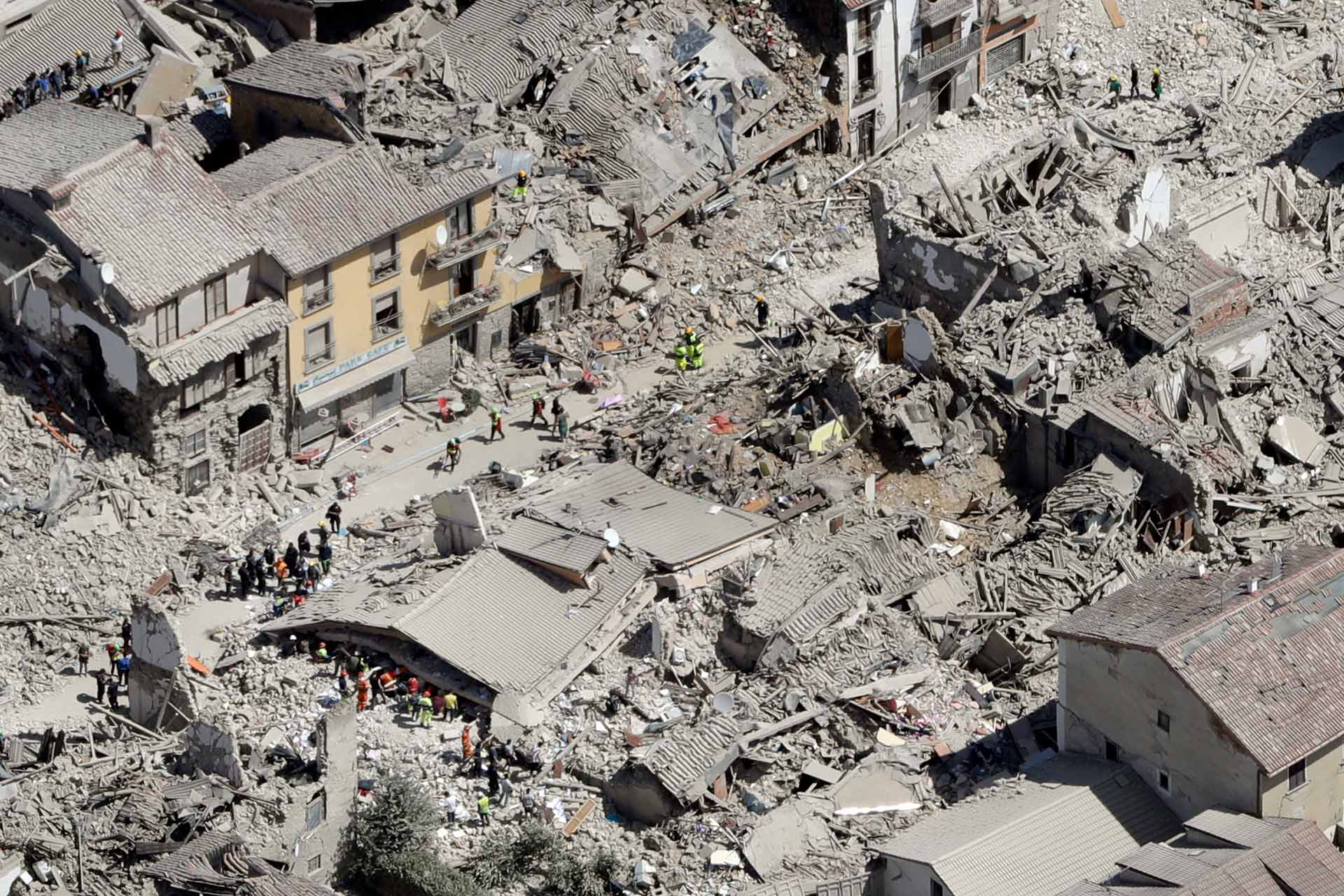Rescue crews using bulldozers and their bare hands raced to dig out survivors from a strong earthquake that reduced three central Italian towns to rubble Wednesday. The death toll stood at 120 but the number of dead and missing was uncertain given the huge number of vacationers in the area for summer’s final days.
Residents wakened before dawn by the temblor emerged from their crumbled homes to find what they described as apocalyptic scenes “like Dante’s Inferno,” with entire blocks of buildings turned into piles of sand and rock, thick dust choking the air and a putrid smell of gas.
Click on photos to enlarge

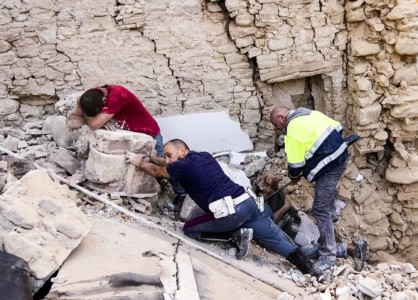
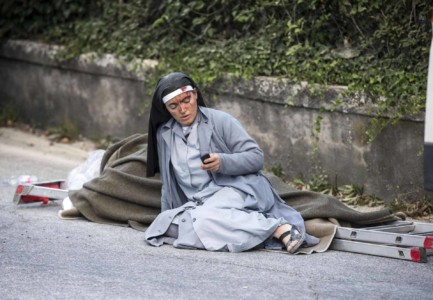
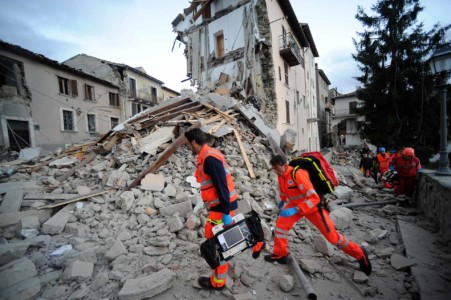

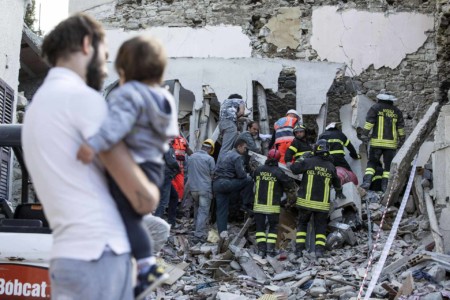
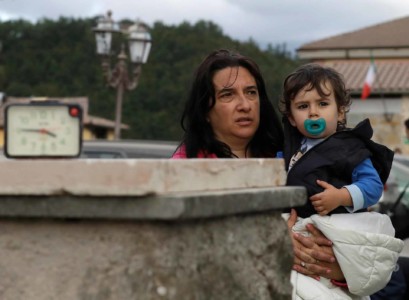

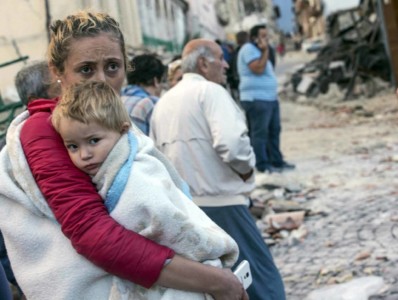
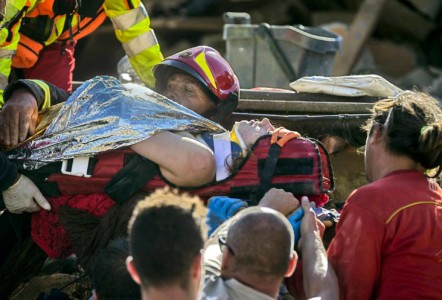
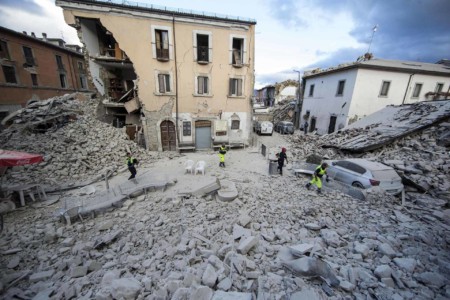
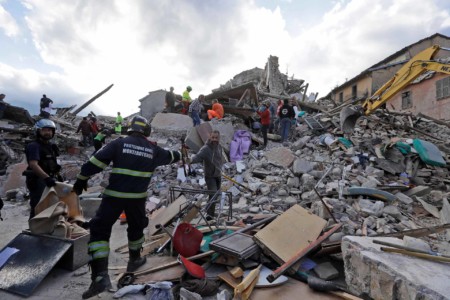
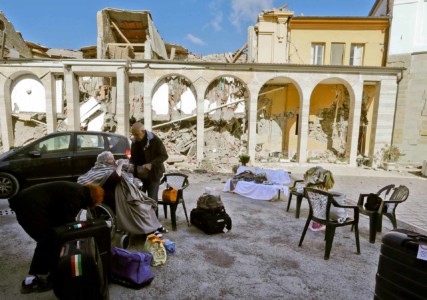

CCTV’s Kate Parkinson reports from hardest hit mountain town of Amatrice.

“The town isn’t here anymore,” said Sergio Pirozzi, the mayor of the hardest hit town of Amatrice. “I believe the toll will rise.”
The magnitude 6 quake struck at 3:36 a.m. (0136 GMT) and was felt across a broad swath of central Italy, including Rome, where residents woke to a long swaying followed by aftershocks. The temblor shook the Lazio region and Umbria and Le Marche on the Adriatic coast.
Premier Matteo Renzi visited the zone Wednesday, greeted rescue teams and survivors and announced the toll stood at 120. He promised the quake-prone area that “No family, no city, no hamlet will be left behind.”
Hardest hit were the tiny towns of Amatrice and Accumoli near Rieti, some 100 kilometers (80 miles) northeast of Rome, and Pescara del Tronto, some 25 kilometers further east. Italy’s civil protection agency, which was coordinating the rescue and care for survivors, said dozens were injured and thousands in need of temporary housing, though it stressed the numbers were fluid.
The medieval center of Amatrice was devastated, with the hardest-hit half of the city cut off by rescue crews digging by hand to get to trapped residents. The birthplace of the famed spaghetti all’amatriciana bacon and tomato sauce, it is made up of 69 hamlets that teams from around Italy were working to reach with sniffer dogs, earth movers and other heavy equipment.
Rocks and metal tumbled onto the streets of the city center and dazed residents huddled in piazzas as more than 40 aftershocks jolted the region into the early morning hours, some as strong as 5.1.
“The whole ceiling fell but did not hit me,” marveled resident Maria Gianni. “I just managed to put a pillow on my head and I wasn’t hit luckily, just slightly injured my leg.”
Another woman, sitting in front of her destroyed home with a blanket over her shoulders, said she didn’t know what had become of her loved ones.
“It was one of the most beautiful towns of Italy and now there’s nothing left,” she said, too distraught to give her name. “I don’t know what we’ll do.”
As the August sun bared down, residents, civil protection workers and even priests dug with shovels, bulldozers and their bare hands to reach survivors. Dozens were pulled out alive: There was relief as a woman emerged on a stretcher from one building, followed by a dog.
“We need chain saws, shears to cut iron bars, and jacks to remove beams: everything, we need everything,” civil protection worker Andrea Gentili told The Associated Press. Italy’s national blood drive association appealed for donations to Rieti’s hospital.
But just a few kilometers to the north, in Illica, the response was slower as residents anxiously waited for loved ones to be extracted from the rubble.
“We came out to the piazza, and it looked like Dante’s Inferno,” said Agostino Severo, a Rome resident visiting Illica. “People crying for help, help. Rescue workers arrived after one hour… one and a half hours.”
The devastation harked back to the 2009 quake that killed more than 300 people in and around L’Aquila, about 90 kilometers (55 miles) south of the latest quake. The town, which still hasn’t bounced back fully, sent emergency teams Wednesday to help with the rescue.
“I don’t know what to say. We are living this immense tragedy,” said a tearful Rev. Savino D’Amelio, a parish priest in Amatrice. “We are only hoping there will be the least number of victims possible and that we all have the courage to move on.”
Another hard-hit town was Pescara del Tronto, in the Le Marche region, where the main road was covered in debris.
Residents were digging their neighbors out by hand since emergency crews hadn’t yet arrived in force. Photos taken from the air by regional firefighters showed the town essentially flattened; Italy requested EU satellite images of the whole area to get the scope of the damage.
“There are broken liquor bottles all over the place,” lamented Gino Petrucci, owner of a bar in nearby Arquata Del Tronto where he was beginning the long cleanup.
One rescue was particularly delicate as a ranger in Capodacqua, in the Marche province of Ascoli Piceno, diplomatically tried to keep an 80-year-old woman calm as she begged to get to a toilet, even though she was trapped in the rubble.
“Listen, I know it’s not nice to say but if you need to pee you just do it,” he said. “Now I move away a little bit and you do pee please.”
The Italian geological service put the magnitude at 6.0; the U.S. Geological Survey reported 6.2 with the epicenter at Norcia, about 170 kilometers (105 miles) northeast of Rome, and with a relatively shallow depth of 10 kilometers (6 miles).
“Quakes with this magnitude at this depth in our territory in general create building collapses, which can result in deaths,” said the head of Italy’s civil protection service, Fabrizio Curcio. He added that the region is popular with tourists escaping the heat of Rome, with more residents than at other times of the year, and that a single building collapse could raise the toll significantly.
The mayor of Accumoli, Stefano Petrucci, said a family of four had died there, one of the few young families who had decided to stay in the area. He wept as he noted that the tiny hamlet of 700 swells to 2,000 in the summer months, and that he feared for the future of the town.
“I hope they don’t forget us,” he told Sky TG24.
In Amatrice, the Rev. Fabio Gammarota, priest of a nearby parish, said he had blessed seven bodies extracted so far. “One was a friend of mine,” he said.
A 1997 quake killed a dozen people in central Italy and severely damaged one of the jewels of Umbria, the Basilica of St. Francis in Assisi, filled with Giotto frescoes. The Franciscan friars who are the custodians of the basilica reported no immediate damage from Wednesday’s temblor.
Pope Francis skipped his traditional catechism for his Wednesday general audience and instead invited pilgrims in St. Peter’s Square to recite the rosary with him.
Tommaso Della Longa on Italy earthquake
For more on the earthquake and the latest on the rescue and relief efforts, CCTV America’s Asieh Namdar spoke to Tommaso Della Longa, Italian Red Cross spokesperson.
 CGTN America
CGTN America